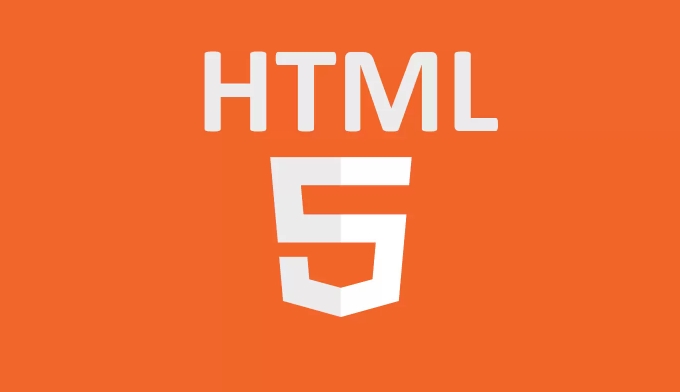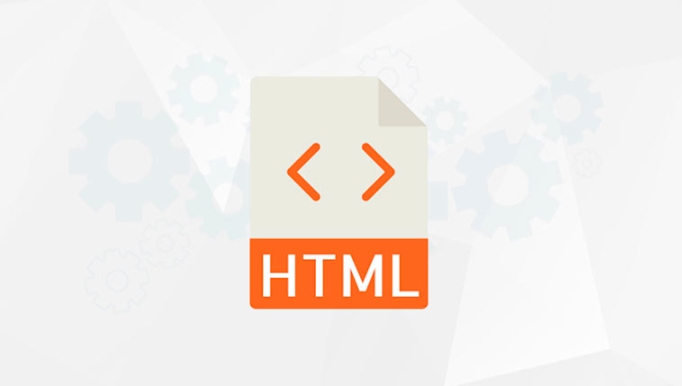The formenctype property should be used when you need to specify an encoding type for a specific submit button without affecting the overall form behavior. 1. Usage scenario: When a form has multiple submit buttons, data needs to be sent in different encoding types, such as one button for regular submission and the other for file upload; 2. Support types: including application/x-www-form-urlencoded (default), multipart/form-data (for file upload), and text/plain (for debugging); 3. Correct usage: Add formctype to a button with type submit, which only takes effect on the submit button; 4. Notes: It is necessary to use it in conjunction with the POST method, pay attention to browser compatibility, and ensure that the server can correctly parse the corresponding encoding format.

The formenctype attribute comes in handy when you want to specify the encoding type of data when submitting a form, but don't want to affect the behavior of the entire <form></form> element. It allows you to set the encoding method for a specific submit button instead of using the enctype settings on <form></form> uniformly. This is especially useful for scenarios where different submission behaviors need to be performed according to different buttons.

When should I use formenctype
The most common use scenario is to have multiple submit buttons in a form, each of which wants to send data in a different encoding type. For example, one button is used for regular submissions (default is application/x-www-form-urlencoded ), and another button may want to upload files in plain text or binary form ( multipart/form-data is required).
- For example: you have a form to edit an article, one button is "Save Draft" and the other is "Publish". If you want the "Publish" button to bring the file upload function, you can add
formenctype="multipart/form-data"to this button.
The advantage of this approach is that there is no need to write JavaScript to dynamically modify form properties, and there is no need for multiple forms to implement different submission methods.

Which encoding types are supported
The values supported by formenctype are the same as enctype of <form></form> , and there are mainly three types:
-
application/x-www-form-urlencoded: Default value, suitable for most normal form submissions. -
multipart/form-data: Used to include file uploads. -
text/plain: Send data in plain text format, suitable for debugging, not commonly used.
These values determine how the browser encodes the form data before sending it to the server. For example, when there is no need to upload a file, it is not necessary to use multipart/form-data , because it will increase unnecessary transmission overhead.

How to use formenctype correctly
To use formenctype in HTML, just add it to <button type="submit"></button> or <input type="submit"> .
For example:
<form action="/submit" method="post"> <input type="text" name="title" /> <input type="file" name="image" /> <!-- Default submission method--> <button type="submit">Save</button> <!-- Submit with multipart/form-data--> <button type="submit" formulactype="multipart/form-data">Publish and upload pictures</button> </form>
In this example:
- Click the first button and submit it according to the default encoding method in
<form></form>. - Click the second button, even if the form itself does not have
enctypeset, it will usemultipart/form-datato make sure the file can be processed correctly.
It should be noted that formenctype only takes effect on submit buttons and will not work on other types of buttons or input elements.
Frequently Asked Questions and Precautions
Sometimes you will find that formenctype is set but it does not take effect. This is usually due to the following reasons:
-
methodof the form itself is notpost: only POST requests useenctypeandformenctype, and the data requested by GET are sent through URL query parameters. - Browser compatibility: Modern browsers basically support
formenctype, but there may be problems on some old devices. - Whether the server-side configuration matches: If you use
multipart/form-data, the backend must also be ready to receive this format, otherwise a parsing error may occur.
Basically that's it. Using formenctype rationally can make your forms more flexible, especially when there are multiple submission methods required, it can be easily done without using JS.
The above is the detailed content of Using the `formenctype` Attribute for Form Data. For more information, please follow other related articles on the PHP Chinese website!

Hot AI Tools

Undress AI Tool
Undress images for free

Undresser.AI Undress
AI-powered app for creating realistic nude photos

AI Clothes Remover
Online AI tool for removing clothes from photos.

Clothoff.io
AI clothes remover

Video Face Swap
Swap faces in any video effortlessly with our completely free AI face swap tool!

Hot Article

Hot Tools

Notepad++7.3.1
Easy-to-use and free code editor

SublimeText3 Chinese version
Chinese version, very easy to use

Zend Studio 13.0.1
Powerful PHP integrated development environment

Dreamweaver CS6
Visual web development tools

SublimeText3 Mac version
God-level code editing software (SublimeText3)

Hot Topics
 Applying Semantic Structure with article, section, and aside in HTML
Jul 05, 2025 am 02:03 AM
Applying Semantic Structure with article, section, and aside in HTML
Jul 05, 2025 am 02:03 AM
The rational use of semantic tags in HTML can improve page structure clarity, accessibility and SEO effects. 1. Used for independent content blocks, such as blog posts or comments, it must be self-contained; 2. Used for classification related content, usually including titles, and is suitable for different modules of the page; 3. Used for auxiliary information related to the main content but not core, such as sidebar recommendations or author profiles. In actual development, labels should be combined and other, avoid excessive nesting, keep the structure simple, and verify the rationality of the structure through developer tools.
 What are the essential HTML elements for structuring a webpage?
Jul 03, 2025 am 02:34 AM
What are the essential HTML elements for structuring a webpage?
Jul 03, 2025 am 02:34 AM
The web page structure needs to be supported by core HTML elements. 1. The overall structure of the page is composed of , , which is the root element, which stores meta information and displays the content; 2. The content organization relies on title (-), paragraph () and block tags (such as ,) to improve organizational structure and SEO; 3. Navigation is implemented through and implemented, commonly used organizations are linked and supplemented with aria-current attribute to enhance accessibility; 4. Form interaction involves , , and , to ensure the complete user input and submission functions. Proper use of these elements can improve page clarity, maintenance and search engine optimization.
 Implementing client-side form validation using HTML attributes.
Jul 03, 2025 am 02:31 AM
Implementing client-side form validation using HTML attributes.
Jul 03, 2025 am 02:31 AM
Client-sideformvalidationcanbedonewithoutJavaScriptbyusingHTMLattributes.1)Userequiredtoenforcemandatoryfields.2)ValidateemailsandURLswithtypeattributeslikeemailorurl,orusepatternwithregexforcustomformats.3)Limitvaluesusingmin,max,minlength,andmaxlen
 What are self-closing tags in HTML?
Jul 02, 2025 pm 02:55 PM
What are self-closing tags in HTML?
Jul 02, 2025 pm 02:55 PM
Self-closing tags are elements in HTML that do not require closed tags because they do not contain content. Common examples include: ① Insert pictures; ② Add line breaks; ③ Create horizontal lines; ④ Define form input; ⑤ Link external resources; ⑥ Provide metadata. These tags work through attributes such as or. There are two correct ways to write: standard HTML syntax, such as XHTML style, but HTML5 recommends the former. Note that you cannot use self-closed form on labels that require the package content. If the error is wrong, it should be changed to a correctly closed Hello. Proper use of self-closing tags helps keep your code simple and efficient, and improves compatibility with other tools such as frameworks.
 Implementing Clickable Buttons Using the HTML button Element
Jul 07, 2025 am 02:31 AM
Implementing Clickable Buttons Using the HTML button Element
Jul 07, 2025 am 02:31 AM
To use HTML button elements to achieve clickable buttons, you must first master its basic usage and common precautions. 1. Create buttons with tags and define behaviors through type attributes (such as button, submit, reset), which is submitted by default; 2. Add interactive functions through JavaScript, which can be written inline or bind event listeners through ID to improve maintenance; 3. Use CSS to customize styles, including background color, border, rounded corners and hover/active status effects to enhance user experience; 4. Pay attention to common problems: make sure that the disabled attribute is not enabled, JS events are correctly bound, layout occlusion, and use the help of developer tools to troubleshoot exceptions. Master this
 How to group options within a select dropdown using html?
Jul 04, 2025 am 03:16 AM
How to group options within a select dropdown using html?
Jul 04, 2025 am 03:16 AM
Use tags in HTML to group options in the drop-down menu. The specific method is to wrap a group of elements and define the group name through the label attribute, such as: 1. Contains options such as apples, bananas, oranges, etc.; 2. Contains options such as carrots, broccoli, etc.; 3. Each is an independent group, and the options within the group are automatically indented. Notes include: ① No nesting is supported; ② The entire group can be disabled through the disabled attribute; ③ The style is restricted and needs to be beautified in combination with CSS or third-party libraries; plug-ins such as Select2 can be used to enhance functions.
 Configuring Document Metadata Within the HTML head Element
Jul 09, 2025 am 02:30 AM
Configuring Document Metadata Within the HTML head Element
Jul 09, 2025 am 02:30 AM
Metadata in HTMLhead is crucial for SEO, social sharing, and browser behavior. 1. Set the page title and description, use and keep it concise and unique; 2. Add OpenGraph and Twitter card information to optimize social sharing effects, pay attention to the image size and use debugging tools to test; 3. Define the character set and viewport settings to ensure multi-language support is adapted to the mobile terminal; 4. Optional tags such as author copyright, robots control and canonical prevent duplicate content should also be configured reasonably.
 Adding captions and tracks to HTML video and audio elements.
Jul 02, 2025 pm 04:05 PM
Adding captions and tracks to HTML video and audio elements.
Jul 02, 2025 pm 04:05 PM
To embed video or audio with subtitles and audio tracks into a web page, it can be achieved through HTML native functionality. 1. Use tags to add subtitles files in WebVTT format and set the kind, srclang and label attributes; 2. Support multi-language subtitles through multiple elements, and use the default attribute to set the default language; 3. Multi-tracks can control multiple element switching through JavaScript, or use more complex media extension solutions; 4. Pay attention to browser compatibility, path configuration and format verification to ensure normal operation on different devices and provide backup solutions.






